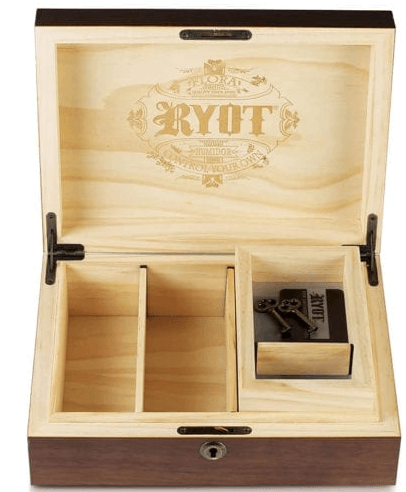Have you ever wondered about your furry friend sniffing around your stash? It’s no secret that cannabis is becoming increasingly common in households, but what about the impact that arises from cannabis and pets?
This article digs into the intricacies of cannabis and pets, examining its impact on our furry friends and providing guidance on their safety.
Understanding the Relationship between Cannabis and Pets
Have you ever wondered if Fido or Fluffy could get a buzz from your cannabis? This section explores the relationship between cannabis and pets, discussing how it affects their health and if it could lead to a luxurious lifestyle for pets.
Cannabis and Pets – can it hurt them?
Pets can be affected by cannabis exposure in the same way as humans. Because dogs and cats are naturally curious and like to explore, they are vulnerable.

Pets can experience symptoms like lethargy, coordination issues, vomiting, diarrhea, and in severe cases, seizures or coma when they ingest cannabis through inhalation or ingestion.
The ASPCA reports a 765% increase in cannabis-related calls to their Animal Poison Control Centre over the past decade, indicating a growing concern about cannabis and pets.
High THC concentrations in cannabis products, found in edibles and concentrates, pose a greater risk to pets compared to low-potency CBD oils.
If your pet ingests cannabis, seek immediate veterinary care to prevent severe health complications and ensure their safety and well-being.
How Cannabis Affects Pets’ Bodies
The ingestion of cannabis by pets, whether by accident through eating edibles or inhaling secondhand smoke, has a similar effect on their endocannabinoid system to that of humans.
THC, the psychoactive component of cannabis, binds to receptors in the pet’s body and brain, causing various effects such as perception, balance, and changes in consciousness.
Pets, especially dogs, have a higher concentration of cannabinoid receptors in their brains to humans. They can be more sensitive to the effects of THC, leading to more severe symptoms.
THC toxicity in dogs can cause severe symptoms like tremors, seizures, and even death, emphasizing the need for pet owners to understand these risks.
According to ongoing research, CBD, on the other hand, has been linked to potential therapeutic benefits for pets, alleviating pain, anxiety, and seizures without the psychoactive effects of THC.
Recognizing Symptoms of Cannabis Toxicity in Pets
Recognizing the symptoms of cannabis toxicity in pets is essential for taking immediate action and seeking veterinary care. Signs to watch for include:
Lethargy or sleepiness: Lethargy or excessive drowsiness combined with unusual sluggishness is a common indicator and red flag of cannabis toxicity, especially following exposure.
Loss of Balance: Pets under the influence of cannabis may appear wobbly or unsteady, similar to an individual who has consumed excessive amounts of alcohol.
Vomiting and diarrhea: Cannabis toxicity in pets can cause vomiting and diarrhea, making it necessary to consider if they have had access to cannabis.
Severe symptoms: Cannabis toxicity can cause severe symptoms like tremors, seizures, or coma in pets, requiring immediate veterinary care if you notice any of these symptoms.
The Dangers of Cannabis Exposure to Pets
Cannabis can be a relaxing drug for humans, but accidental consumption can pose serious risks to pets, ranging from minor discomfort to potentially fatal situations, requiring careful precautions.
Potential Risks of Cannabis Ingestion for Pets
As mentioned earlier, there are real dangers of cannabis ingestion for pets. However, beyond the health risks, cannabis ingestion can also cause long-term complications for your pet.
Chronic exposure to THC can impact cognitive function and overall well-being, potentially affecting their quality of life.
Long-Term Effects of Cannabis Exposure on Pets
Acute intoxication symptoms may pass rapidly, but long-term cannabis exposure can negatively impact your pet’s health and well-being.
Cognitive functions: Long-term cognitive function changes in pets may result from chronic cannabis exposure; these alterations may mirror changes in human behaviour, memory, and learning capacities.
Respiratory system: Long-term exposure to THC in pets can cause respiratory issues due to inflammation of their lungs and airways.
Addiction: Research indicates that regular exposure to cannabis may lead to a potential dependence or tolerance in pets, raising concerns about potential addiction.
Underlying health conditions: Chronic cannabis exposure can worsen a pet’s health conditions like anxiety or epilepsy, making it necessary to assess the long-term risks associated with cannabis use.
Responsible Cannabis Use Around Pets
As much as we love relaxation, we must ensure our pets stay safe and sound. This section discusses responsible cannabis use around pets, including securely storing products and educating others about potential risks. It encourages sharing knowledge and enjoying cannabis for relaxation and pet safety.
Keeping Cannabis Products Secure from Pets
Pets, especially dogs, can be surprisingly good at getting into things they shouldn’t, and cannabis products are no different. By implementing these measures, you can minimize the risks of accidental cannabis exposure and ensure your furry friend’s well-being.
Securely Store Cannabis Products: Securely store products away from pets by investing in lockable cabinets or containers to prevent curious pets from accessing edibles, oils, or other cannabis products.
Use Pet-Proof Containers: Choose pet-proof containers for cannabis storage, made of durable materials with childproof lids, to prevent pets with curious noses and paws from opening them.
Ryot® has a variety of smell-proof bags, locking storage humidor boxes (replacement keys are also available), and beautiful wooden cases that can be stored on a shelf.

Designate Cannabis Consumption Areas: Select specific home areas for cannabis consumption, away from pet-friendly areas, to reduce accidental exposure to smoke or spills.
Dispose of Cannabis Waste Properly: Dispose of cannabis waste securely in a tight-fitting bin, avoiding access due to smell attraction.
Educate Household Members and Guests: Educate your household and guests about the significance of keeping cannabis products out of pets’ reach, reminding them to be careful of their storage and clean up spills promptly.
Monitor Pet Behaviour: Monitor your pet’s behaviour for signs of curiosity or cannabis access, and take immediate action if suspicious to secure the area and prevent potential exposure.
Educating Pet Owners on the Dangers of Cannabis for Pets
Many pet owners may not be aware of the risks associated with cannabis exposure, so spreading awareness is important for keeping pets safe.
Educating pet owners on the importance of securely storing cannabis products and recognizing signs of toxicity in pets is essential for preventing accidental ingestion and prompting veterinary care when necessary.
Misconceptions about cannabis and pets, like CBD’s safety, should be dispelled. While CBD may have therapeutic benefits, a veterinarian should be contacted to determine its safety and efficacy.
Offering resources and information on cannabis and pets, such as articles, infographics, or pamphlets, can help pet owners make informed decisions about their household’s cannabis use.
Safe Alternatives for Cannabis and Pets
It’s essential to find ways to indulge in cannabis responsibly without putting pets at risk of accidental ingestion or exposure.
Method of use: Opt for cannabis-infused oils or tinctures instead of edibles to reduce pet accidental ingestion risk.
Location of use: Consuming cannabis products outside the home or in a designated area away from pets is a safe alternative to avoid potential exposure to smoke or leftover products.
Medicinal purposes: Consult your veterinarian for alternative treatment options for your pets if using cannabis for medicinal purposes. They can offer safe and effective solutions without the risks associated with cannabis.
Provide stimulation: Provide mental and physical stimulation, interactive toys, regular exercise, and enrichment activities to prevent cannabis temptation and keep pets occupied.
What to Do if a Pet Ingests Cannabis
Accidents happen, but being prepared can make all the difference in ensuring your pet’s safety and well-being. If you notice suspicious behaviour in your pet, act quickly and calmly to determine if cannabis ingestion is the cause.
If you encounter this nerve-wracking situation, take a deep breath and remain calm.
Immediate Steps to Take When Cannabis Ingestion is Suspected
Time is of the essence, so here are the immediate steps you need to take:
Assess the Situation: If you catch your pet in the act or notice suspicious behaviour like unusual lethargy or disorientation, act quickly but calmly to determine if cannabis ingestion is the cause.
Remove Your Pet from the Area: If you suspect cannabis ingestion, relocate your pet to a safe, quiet area away from any remaining cannabis products to prevent further exposure and minimize potential hazards.
Contact Your Veterinarian: Contact your veterinarian immediately for guidance on your pet’s condition, detailing the situation and symptoms. Your vet can provide instructions on what to do next.
Do Not Induce Vomiting: Inducing vomiting for cannabis ingestion in pets is not recommended due to potential complications, especially if the pet is already experiencing respiratory distress.
Provide Supportive Care: While awaiting veterinary guidance, offer water to prevent dehydration and keep your pet comfortable.
Remember, speedy action is critical when cannabis ingestion is suspected in pets. Following these immediate steps can help ensure the best possible outcome for your furry companion.
Seeking Veterinary Care for Pets Exposed to Cannabis
It is important to seek expert assistance, so your pet gets care. Follow these steps.
Contact a veterinarian immediately: If you haven’t already done so, contact your veterinarian immediately if your pet is experiencing symptoms of cannabis ingestion.
Follow Veterinary Advice: Your veterinarian will provide specific instructions based on your pet’s condition, which may involve visiting for evaluation or monitoring them at home under their guidance.
Be Honest and Transparent: Provide your veterinarian with as much information as possible about the circumstances surrounding the cannabis exposure. This includes the type, amount consumed, and any other relevant details.
Be Prepared for Treatment: Your veterinarian may suggest treatments like intravenous fluids, medications, or monitoring for potential complications based on the severity of your pet’s symptoms.
Monitor Your Pet’s Recovery: Closely monitor your pet for behavioural changes or symptoms. Follow your veterinarian’s at-home care instructions and keep any recommended follow-up appointments.
Conclusion
In conclusion, being proactive and careful can help you and your pets live in harmony while balancing cannabis use and pet safety.
Cannabis use and pet safety are intertwined, requiring knowledge, instruction, and responsible behaviour. Pets can be at risk if they consume cannabis, and prompt response is critical. Veterinarians can provide advice and preventative action.
Continuing education can balance responsible cannabis use with pet safety. Advocating for pet welfare is essential.
Medical Disclaimer (this also applies to animals, as we are not veterinarians)
Are you worried about what foods might harm your pets? Check this article – How To Keep Your Pets Safe: Avoid These Toxic Foods

We love to travel. For our trip to Mexico, we were able to save money by house sitting, which was something completely new to us. If this is something that interests you, then check out TrustedHousesitters or HouseSitMexico (be sure and use Code thetr6210d47b7cc90 for discount). We hope you visit often.
